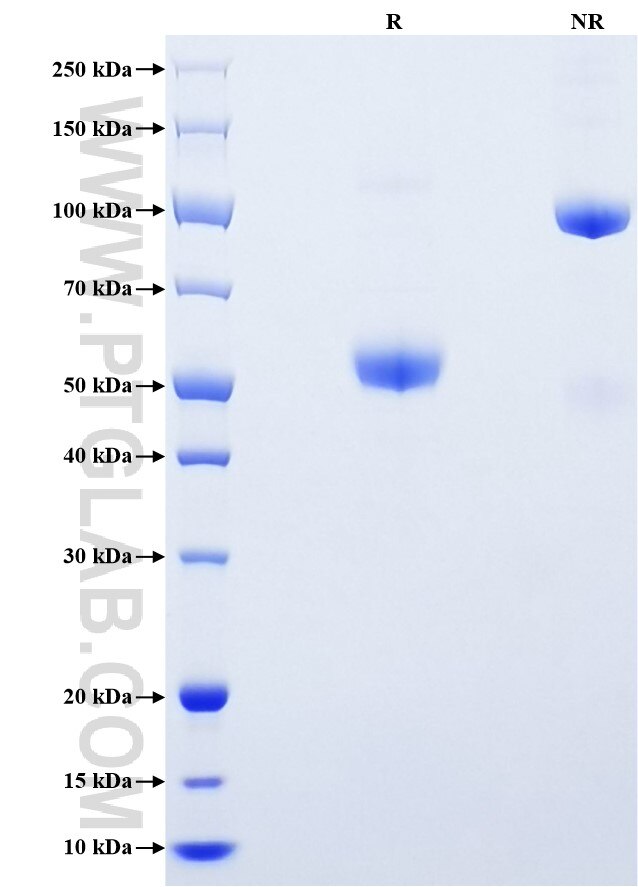Recombinant Human Osteoprotegerin/TNFRSF11B protein (His Tag)
Species
Human
Purity
>90 %, SDS-PAGE
Tag
His Tag
Activity
not tested
Cat no : Eg0976
Validation Data Gallery
Product Information
| Purity | >90 %, SDS-PAGE |
| Endotoxin | <0.1 EU/μg protein, LAL method |
| Activity |
Not tested |
| Expression | HEK293-derived Human Osteoprotegerin protein Glu22-Leu401 (Accession# O00300) with a His tag at the C-terminus. |
| GeneID | 4982 |
| Accession | O00300 |
| PredictedSize | 44.7 kDa |
| SDS-PAGE | 50-58 kDa, reducing (R) conditions |
| Formulation | Lyophilized from 0.22 μm filtered solution in PBS, pH 7.4. Normally 5% trehalose and 5% mannitol are added as protectants before lyophilization. |
| Reconstitution | Briefly centrifuge the tube before opening. Reconstitute at 0.1-0.5 mg/mL in sterile water. |
| Storage Conditions |
It is recommended that the protein be aliquoted for optimal storage. Avoid repeated freeze-thaw cycles.
|
| Shipping | The product is shipped at ambient temperature. Upon receipt, store it immediately at the recommended temperature. |
Background
Osteoprotegerin (OPG), also known as TNFRSF11B or OCIF, is a member of the tumor necrosis factor receptor super family (TNFRSF). It is a secreted glycoprotein that inhibits osteoclastogenesis and is involved in the regulation of bone density. Osteoprotegerin acts as decoy receptor for receptor activator of nuclear factor-kappa B ligand (RANKL) and neutralizes its function in osteoclastogenesis. Osteoprotegerin may function as a soluble decoy receptor for tumor necrosis factor (TNF)-related apoptosis inducing ligand (TRAIL) and inhibits TRAIL-induced apoptosis. TRAIL blocks osteoprotegerin mediated inhibition of osteoclastogenesis.
References:
1. Simonet WS. et al. (1997). Cell. 189(2):309-319. 2. Emery JG. et al. (1998). J Biol Chem. 273(23):14363-14367. 3. Yasuda H. et al. (1998). Proc Natl Acad Sci U S A. 95(7):3597-3602.

